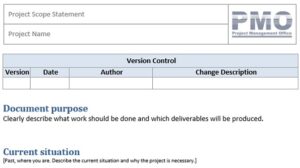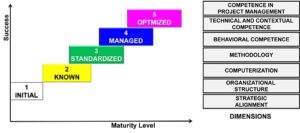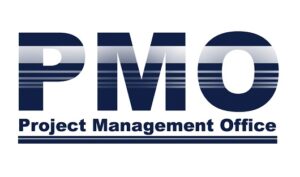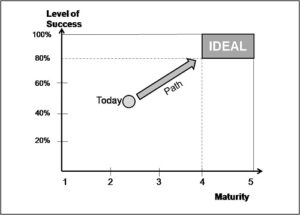As organizations evolve, governance in project management must evolve too. The PMBOK® Guide – Eighth Edition introduces the Governance Performance Domain, reflecting a modern view of how governance supports value delivery, not just control.
In earlier editions, governance was often treated as a background structure. In PMBOK 8, it becomes a performance domain—a critical system that ensures projects operate within the right boundaries, align with strategy, and continuously deliver measurable value.
This article explores what the Governance Performance Domain means, why it matters, and how it helps teams turn oversight into strategic advantage.
What Is the Governance Performance Domain?
According to the PMBOK® Guide (Eighth Edition – Table of Contents, 2025), Performance Domains describe areas of focus that collectively lead to effective project outcomes. The Governance Performance Domain defines how decision-making, oversight, and accountability are structured to support the delivery of value across all types of projects.
In practical terms, project governance refers to the framework and processes that guide how a project is directed and controlled. It involves defining the decision-making structure, roles, responsibilities, and procedures that ensure a project aligns with the strategic objectives of the organization.
Project governance establishes the rules of engagement for all involved stakeholders, ensuring that everyone is on the same page. This framework helps in managing resources efficiently, maintaining transparency, and ensuring accountability throughout the project lifecycle.
Moreover, effective project governance is integral to mitigating risks and navigating complexities. It provides a clear path for resolving issues and making informed decisions, ultimately delivering real value to the organization and stakeholders.
Governance, in this context, is not bureaucracy; it’s a strategic mechanism that ensures decisions are made effectively, risks are managed proactively, and benefits are realized systematically.
Why Governance Matters for Value Delivery
Governance provides a structured approach to decision-making, which is vital for maintaining alignment with business goals. By defining clear roles and responsibilities, governance ensures that everyone involved is accountable for their actions, leading to more effective collaboration and problem-solving.
Moreover, governance frameworks help in identifying potential risks early on, allowing for proactive management strategies. This foresight is instrumental in minimizing disruptions and steering the project towards successful outcomes.
Ultimately, the value of a project is maximized when governance is integrated seamlessly, supporting both strategic alignment and operational efficiency. In doing so, it lays the foundation for delivering tangible benefits to the organization and its stakeholders.
Good governance doesn’t slow down projects—it accelerates results by providing clarity and direction.
When governance is weak, projects drift, resources are wasted, and accountability fades. When governance is strong and adaptive, teams understand who decides what, how performance is tracked, and what success means.
The Governance Performance Domain strengthens value delivery through:
- Strategic Alignment – Ensuring every initiative connects to organizational goals and measurable benefits.
- Transparency – Making information visible and actionable for all decision-makers.
- Accountability – Defining clear ownership for results, decisions, and escalations.
- Consistency – Applying common principles and standards across projects, portfolios, and programs.
Together, these principles transform governance into a value-enabling ecosystem.
Components of the Governance Performance Domain
While PMBOK 8’s final text is pending, early insights from the PMI’s published Table of Contents and the evolution of PMBOK 7 suggest the domain integrates four major components:
1. Governance Structures
Defines the hierarchy of decision-making—committees, PMOs, sponsors, and project managers. These structures provide authority, escalation paths, and communication channels.
2. Governance Frameworks
Outlines policies, principles, and methodologies that ensure consistent execution. Frameworks may vary (predictive, hybrid, or agile) but share a focus on value-based governance.
3. Decision-Making and Oversight
Details how decisions are made, by whom, and based on what information. Effective oversight relies on timely, accurate data and a culture of transparency.
4. Performance and Value Assurance
Introduces mechanisms to monitor outcomes, measure benefits, and verify that the project is delivering the intended value to stakeholders.
By applying these four elements, governance becomes a living system—responsive, transparent, and aligned with organizational priorities.
Roles and Responsibilities Within Governance
The Governance Performance Domain emphasizes shared accountability across multiple layers of leadership. Each role contributes uniquely to guiding the project towards its strategic goals.
| Role | Governance Contribution |
|---|---|
| Executive Sponsor | Sets direction, approves major decisions, ensures alignment with strategy. |
| Steering Committee | Oversees the project from a strategic level, providing guidance and ensuring compliance with governance frameworks. They are responsible for making high-level decisions and managing risks, thereby safeguarding the project’s alignment with the organization’s vision. |
| Project Manager | Implements governance processes, maintains transparency, escalates as needed, oversees daily tasks and ensures the project adheres to its timeline, budget, and scope. They act as the bridge between the project team and stakeholders, facilitating communication and addressing any issues that arise. Their leadership and organizational skills are vital for keeping the project on track. |
| PMO / Governance Office | Establishes frameworks, tracks metrics, and ensures continuous improvement. |
| Stakeholders | Provides insights and feedback. Their involvement ensures that the project aligns with the broader business objectives and meets the needs of those who will be impacted by its outcomes. By actively participating in decision-making processes, stakeholders help shape the direction and success of the project. |
Each role contributes to a governance ecosystem that balances control with empowerment.
Metrics that Define Governance Performance
In the realm of project governance, identifying and tracking Key Performance Indicators (KPIs) is crucial for ensuring that projects provide real value. Governance is only as strong as the data that supports it. PMBOK 8 reinforces a performance-oriented mindset, meaning governance should be measurable and adaptive.
Here are some KPIs to implement project governance:
- Decision Turnaround Time: Speed and quality of governance decisions.
- Benefit Realization Rate: Percentage of benefits achieved versus planned.
- Stakeholder Satisfaction: Perception of transparency and trust in decision-making.
- Risk Resolution Efficiency: Time to escalate and resolve major risks.
- Audit and Compliance Index: Adherence to internal and external standards.
These indicators ensure governance remains focused on results, not rituals.
To leverage these metrics for improvement, organizations should establish a robust tracking system that captures real-time data. Utilizing dashboards or project management software can simplify this process, providing visual representations of progress and highlighting areas needing attention. For instance, a sudden dip in stakeholder satisfaction may signal a need for enhanced communication strategies.
Regular analysis of these metrics allows teams to identify trends and make informed decisions. By benchmarking performance against set targets, organizations can pinpoint strengths and areas for refinement. This iterative process not only optimizes project outcomes but ensures alignment with strategic goals, reinforcing the value delivered through effective project governance.
Integrating Governance with PMO and Portfolios
The PMBOK 8 perspective reinforces that governance is not an isolated function—it’s embedded across the project, program, and portfolio layers.
Aligning project governance with the Project Management Office (PMO) is essential for driving business success and ensuring that project outcomes align with organizational objectives. When governance and the PMO operate in harmony, it creates a unified approach to managing projects, enhancing both efficiency and effectiveness. This alignment ensures that strategic goals are consistently met, reducing the risk of project failure and maximizing value delivery.
To achieve this alignment, organizations can implement several strategies. First, establish clear communication channels between governance bodies and the PMO to facilitate seamless information flow. Regular meetings and updates help keep all parties informed and aligned. Additionally, defining roles and responsibilities within the governance structure clarifies expectations and accountability.
Another strategy involves creating a shared vision and objectives between governance and the PMO. By aligning goals, both entities can work towards common outcomes, fostering collaboration and synergy. Furthermore, integrating governance frameworks with PMO processes ensures consistency in project management practices, supporting a cohesive approach to achieving strategic business objectives.
An effective PMO (Project Management Office) acts as the operational core of the Governance Performance Domain by:
- Defining common policies and tools.
- Maintaining visibility across initiatives.
- Supporting executives with actionable insights.
- Promoting continuous improvement and organizational learning.
In this sense, the PMO becomes the guardian of value, ensuring governance frameworks evolve with strategy and technology.
Adapting Governance to Agile and Hybrid Environments
Striking the right balance between control and agility is crucial for effective project governance. Modern governance must support agility.
The Governance Performance Domain bridges that gap by:
- Allowing decentralized decision-making while preserving accountability.
- Embedding lightweight governance checkpoints within agile cadences (e.g., sprint reviews, retrospectives).
- Measuring outcomes rather than enforcing rigid processes.
This approach enables teams to move fast without losing oversight, maintaining both flexibility and discipline.
Practical Steps to Strengthen Governance Performance
Successful project governance hinges on a few core practices that ensure clarity and direction.
- Define Governance Principles Early – Clarify decision rights and escalation paths during project initiation.
- Establish consistent channels for updates and feedback – It fosters transparency and trust. Teams that hold weekly check-ins or daily stand-ups often see enhanced alignment and fewer misunderstandings. (Regular communication is foundational.)
- Proactively identifying potential risks and developing mitigation strategies – It can save projects from costly setbacks. (Risk management is another critical component).
- Implement decision-making processes – Empowering the governance board with clear authority to make timely decisions can streamline project progression. Consider a scenario where a decision matrix is used to prioritize actions based on impact and urgency, which helps in swift resolution and minimizes bottlenecks.
- Use Visual Dashboards – Improve transparency with real-time metrics and progress tracking.
- Embed Value Metrics – Link governance to tangible business outcomes, not just compliance.
- Conduct Periodic Governance Reviews – Adjust frameworks based on lessons learned and organizational maturity.
- Balance Control and Empowerment – Empower teams within well-defined boundaries.
Integrating these practices into your governance framework not only bolsters project success but also delivers real value by aligning efforts with strategic objectives and ensuring accountability at every level. Each of these actions reinforces the domain’s core purpose: value-driven oversight.
FAQ on Project Governance
As project governance becomes an integral part of successful project management, many questions arise about its implementation and value. Here are some frequently asked questions:
- What is project governance? Project governance is a framework that provides structure, processes, and decision-making models to oversee and guide project management, ensuring alignment with business goals.
- Why is project governance important? It ensures that projects deliver value, meet objectives, and maintain accountability by providing a structured approach to decision-making and risk management.
- How do governance frameworks like PRINCE2, PMBOK, and Agile differ? Each framework offers a unique approach. PRINCE2 is structured and process-driven, PMBOK is comprehensive with best practices, and Agile is flexible and customer-focused.
- What roles are essential in project governance? Key roles include the project manager, stakeholders, and the governance board, each responsible for various aspects of oversight and execution.
- How can project governance be measured? Governance is measured using KPIs and metrics that track alignment, performance, and value delivery, ensuring that projects meet their intended goals.
Understanding these fundamental questions helps in effectively implementing governance to enhance project outcomes and ensure strategic alignment.
Conclusion
The Governance Performance Domain in PMBOK 8 marks a critical evolution in project management thinking. Governance is no longer a background structure—it is an active performance domain focused on alignment, accountability, and measurable value.
Organizations that master this domain don’t just manage projects; they manage outcomes. They build trust, ensure consistency, and create a repeatable pathway from strategy to sustained value delivery.
In short, effective governance is the backbone of performance—and the heartbeat of successful projects.
Throughout this article, we’ve explored the governance performance domain. It’s time to put these insights into action. Implementing effective project governance can transform your projects, ensuring they meet business objectives. Embrace this strategic approach to unlock real value and drive performance forward.
Call to Action:
References
Project Management Institute (PMI). A Guide to the Project Management Body of Knowledge (PMBOK® Guide) – Eighth Edition. Newtown Square, Pennsylvania, USA: Project Management Institute, 2025. PMBOK Guide 8: The New Era of Value-Based Project Management. Available at: https://projectmanagement.com.br/pmbok-guide-8/
Disclaimer
This article is an independent educational interpretation of the PMBOK® Guide – Eighth Edition, developed for informational purposes by ProjectManagement.com.br. It does not reproduce or redistribute proprietary PMI content. All trademarks, including PMI, PMBOK, and Project Management Institute, are the property of the Project Management Institute, Inc. For access to the complete and official content, purchase the guide from Amazon or download it for free at https://www.pmi.org/standards/pmbok if you are a PMI member.





